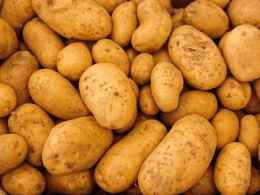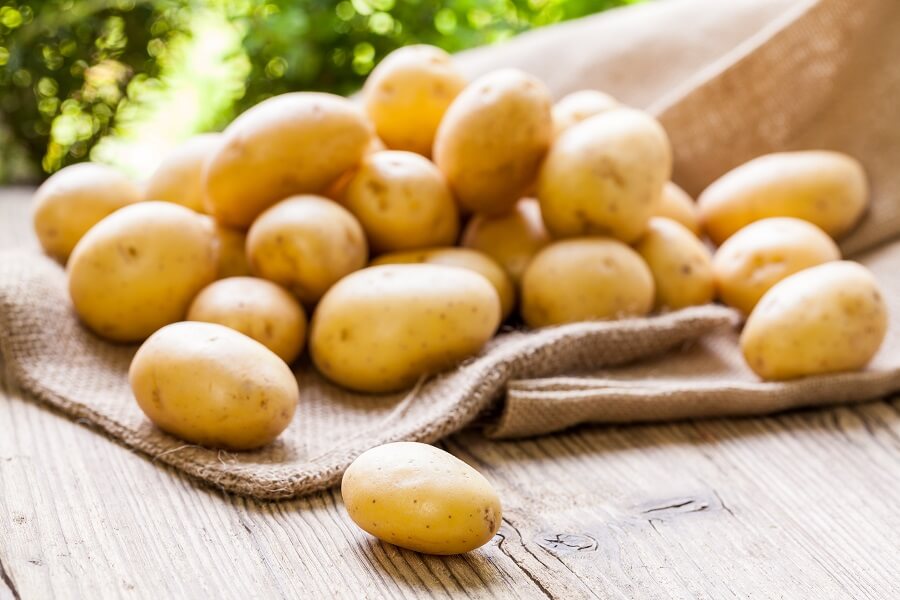Mums, also known as chrysanthemums, are beautiful flowering plants that bloom in the springtime. With their vibrant colors ranging from yellow and pink to red, lavender, and orange, mums add a burst of color to any garden. If you want to enjoy the full potential of these spring blooming mums, it’s important to care for them properly. This guide will provide you with all the information you need to know about planting, caring for, and maximizing the bloom of mums in the spring.
Post Summary
- Plant mums in the spring for optimal bloom output in the summer and fall.
- Ensure the soil is well-drained and the location receives ample sunlight.
- Prune mums in the spring to promote bushy growth and abundant fall flowers.
- Pinch fresh shoots in May, June, and July to achieve a bushy plant with two or three leaves on each shoot.
- Fertilize mums monthly in May, June, and July, but stop fertilization after flower buds form in late July.
Do Mums Come Up In The Spring?
Yes, mums do come up in the spring if they are planted early in the growing season. While chrysanthemums are perennials, they need to be planted in the spring to have enough time to establish themselves before the cold weather arrives. If mums are not planted until they emerge in nurseries and garden centers as fall approaches, they may not grow back in the spring. To ensure the return of mums in the spring, it is best to plant them earlier in the year and allow them to settle in and establish themselves.
In the spring, mums begin to produce buds as they continue to grow. Pruning these buds back until the time comes for new leaves, branches, and flowers to develop is recommended for optimal bloom in the fall. It’s important to plant mums in a sunny location with well-drained soil. The spacing between plants depends on the variety, with little dwarf versions requiring at least 18 inches apart and larger varieties needing up to 36 inches of space. Regular fertilization and pinching of fresh shoots in May, June, and July also play a crucial role in ensuring healthy and bushy plant growth.
When planting mums in the spring, it is important to choose a sunny location with well-drained soil. The soil should be kept damp, but not flooded, to avoid waterlogged roots. Fertilizing mums every month with granulated 5-10-10 or 5-20-20 fertilizer in May, June, and July is recommended. After flower buds form in late July, fertilization should be stopped to promote more flower growth rather than foliage. Proper spacing between plants, based on their size, is also essential for optimal growth.
Pinching is a crucial step in caring for mums in the spring to ensure bushy and attractive plant growth. By pinching the fresh shoots of mums in May, June, and July, and removing any new growth that arises, a bushy plant with two or three leaves on each shoot can be achieved. Pinch the very last bit of each shoot. Regularly removing weeds, applying a 2-inch layer of mulch to keep the root system cool and moist, and monitoring for pests and diseases such as aphids and powdery mildew are also important aspects of mum care in the spring.
| Mum Care Tips for Spring |
|---|
| Plant mums in a sunny location with well-drained soil |
| Prune buds in the spring for optimal fall bloom |
| Space plants properly based on their size |
| Fertilize mums monthly in May, June, and July |
| Pinch fresh shoots to promote bushy growth |
| Remove weeds and apply mulch to keep roots cool |
| Monitor for pests and diseases |
What Do Mums Look Like In The Spring
In the spring, mums undergo a transformation as they begin to produce buds and new growth. The sight of these budding flowers brings anticipation for the colorful display that will soon adorn gardens and landscapes. To ensure optimal bloom in the fall, it is important to understand how mums look in the spring and how to care for them during this crucial growth phase.
Planting mums in a sunny location with well-drained soil is essential for their spring growth. The vibrant colors of mums can brighten up any garden, and they thrive when provided with plenty of sunlight. Adequate spacing between plants is also necessary, allowing enough room for air circulation and preventing overcrowding. Little dwarf varieties should be planted at least 18 inches apart, while larger varieties may require up to 36 inches of space.
Regular pruning and pinching of fresh shoots during the spring months play a crucial role in promoting healthy and bushy plant growth. By removing the buds that appear in the spring, mums can redirect their energy towards developing new leaves, branches, and flowers. Pruning also helps maintain a compact shape and prevents leggy growth.
In addition to pruning, proper fertilization is important for the spring growth of mums. Applying a balanced fertilizer in May, June, and July will provide the necessary nutrients for vigorous growth. However, once flower buds start to form in late July, fertilization should be stopped to encourage more flower production and prevent excessive foliage.
By understanding the growth process of mums in the spring and providing them with the necessary care, you can enjoy a stunning display of blooms in the coming months. Remember to plant them in a sunny location with well-drained soil, prune and pinch off buds for bushy growth, and fertilize appropriately. With these steps, your mums will flourish and bring vibrant color to your garden throughout the spring season.
| Key Points |
|---|
| In the spring, mums produce buds and new growth. |
| Plant mums in a sunny location with well-drained soil. |
| Prune and pinch off buds to promote bushy growth. |
| Fertilize mums in May, June, and July. |
Planting Requirements for Mums in Spring
When it comes to planting mums in the spring, there are a few key requirements to keep in mind. First and foremost, it’s important to choose a sunny location for your mums. These vibrant flowers thrive in full sunlight, so select a spot in your garden that receives at least six hours of direct sunlight each day. Additionally, be sure to choose a location with well-drained soil to prevent waterlogged roots. Mums prefer soil that is slightly acidic, with a pH level between 6.5 and 7.0.
To ensure proper growth and development, it’s essential to keep the soil damp but not flooded. Water your mums regularly, especially during dry spells, and be mindful not to overwater them. Providing consistent moisture will help the roots establish and promote healthy growth. As for fertilization, it’s recommended to apply a granulated 5-10-10 or 5-20-20 fertilizer every month in May, June, and July. This will provide your mums with the necessary nutrients to thrive.
To give your mums enough space to grow and spread out, make sure to properly space them according to their size. Smaller, dwarf varieties should be planted at least 18 inches apart, while larger varieties may need up to 36 inches of space between each plant. By following these planting requirements, you can ensure that your mums have the best chance of flourishing in the spring and beyond.
Soil Requirements for Mums
| Requirement | Details |
|---|---|
| Sunlight | Full sunlight, at least 6 hours per day |
| Soil Drainage | Well-drained soil to prevent waterlogged roots |
| Soil pH | Slightly acidic soil with a pH level between 6.5 and 7.0 |
By meeting these soil requirements and providing proper watering and fertilization, you can create an ideal environment for your mums to thrive in the spring. Remember to choose a sunny location with well-drained soil, provide consistent moisture without overwatering, and space your mums appropriately. With these planting requirements in mind, you’ll be on your way to enjoying beautiful, vibrant mums in your garden this spring.
Pruning and Care for Mums in Spring
Proper pruning and care are essential for the healthy growth and abundant flowering of mums in spring. Pinching is a key technique that helps promote bushy growth and prevent leggy plants. In May, June, and July, pinch the fresh shoots of mums, removing the top portion of each shoot. This encourages lateral branching and leads to a fuller, more attractive plant. By regularly pinching the new growth, you can achieve a bushier mum with two or three leaves on each shoot. This practice not only improves the overall appearance of the plant but also encourages more flowers to bloom.
While pinching is essential, other aspects of care should not be overlooked. Regular weeding is crucial to prevent competition for nutrients, water, and sunlight. Applying a 2-inch layer of organic mulch around the base of the plant can help suppress weeds and maintain soil moisture. However, be careful not to mulch too close to the stem, as this can lead to rot. Monitoring for pests and diseases is also important. Common issues include aphids and powdery mildew. If you notice any signs of infestation or disease, promptly take action to protect your mums and keep them healthy.
Lastly, proper watering is crucial for the well-being of mums in spring. The soil should be kept consistently moist but not waterlogged. Overwatering can lead to root rot and other issues. It’s best to water deeply, allowing the water to penetrate the soil and reach the roots. Avoid watering the foliage, as this can increase the risk of disease. By following these pruning and care practices, you can ensure that your mums thrive and provide a beautiful display of color in your garden.
Pruning and Care Tips for Mums in Spring:
- Pinch the fresh shoots of mums in May, June, and July to promote bushy growth.
- Regularly remove weeds to prevent competition for nutrients and water.
- Apply a 2-inch layer of mulch around the base of the plant to suppress weeds and maintain soil moisture.
- Monitor for pests and diseases, such as aphids and powdery mildew, and take appropriate action if necessary.
- Water mums deeply, ensuring the soil remains consistently moist but not waterlogged.
By following these pruning and care tips, you can help your mums thrive and ensure a stunning display of flowers in the spring.
Conclusion
In conclusion, mums are stunning flowering plants that bring a burst of color to your garden in the spring. By planting them early in the growing season, you can ensure maximum bloom output in the following months. Remember to choose a sunny location with well-drained soil and provide regular watering to keep the roots damp but not waterlogged.
Proper care is crucial for the healthy growth of mums in the spring. Pruning and pinching the fresh shoots in May, June, and July will promote bushy growth and abundant fall flowers. Applying fertilizer during the appropriate months and monitoring for pests and diseases will also help maintain the plant’s health.
By following these guidelines, you can enjoy the beauty and transformative growth of mums throughout the spring and summer months. Incorporate these practices into your gardening routine and watch as your mums thrive and become the centerpiece of your garden.
FAQ
Do mums come up in the spring?
Yes, mums do come up in the spring if they are planted early in the growing season. While chrysanthemums are perennials, they need to be planted in the spring to have enough time to establish themselves before the cold weather arrives. If mums are not planted until they emerge in nurseries and garden centers as fall approaches, they may not grow back in the spring. To ensure the return of mums in the spring, it is best to plant them earlier in the year and allow them to settle in and establish themselves.
What do mums look like in the spring?
In the spring, mums begin to produce buds as they continue to grow. Pruning these buds back until the time comes for new leaves, branches, and flowers to develop is recommended for optimal bloom in the fall. It’s important to plant mums in a sunny location with well-drained soil. The spacing between plants depends on the variety, with little dwarf versions requiring at least 18 inches apart and larger varieties needing up to 36 inches of space. Regular fertilization and pinching of fresh shoots in May, June, and July also play a crucial role in ensuring healthy and bushy plant growth.
What are the planting requirements for mums in spring?
When planting mums in the spring, it is important to choose a sunny location with well-drained soil. The soil should be kept damp, but not flooded, to avoid waterlogged roots. Fertilizing mums every month with granulated 5-10-10 or 5-20-20 fertilizer in May, June, and July is recommended. After flower buds form in late July, fertilization should be stopped to promote more flower growth rather than foliage. Proper spacing between plants, based on their size, is also essential for optimal growth.
How do I prune and care for mums in spring?
Pinching is a crucial step in caring for mums in the spring to ensure bushy and attractive plant growth. By pinching the fresh shoots of mums in May, June, and July, and removing any new growth that arises, a bushy plant with two or three leaves on each shoot can be achieved. Pinch the very last bit of each shoot. Regularly removing weeds, applying a 2-inch layer of mulch to keep the root system cool and moist, and monitoring for pests and diseases such as aphids and powdery mildew are also important aspects of mum care in the spring.
What Do Mums Look Like When They Start to Grow Back in the Spring?
In spring gardening, mums start to display new growth, signaling the beginning of their growth timeline. As they start to grow back, the fresh green shoots and leaves give the mums a rejuvenated appearance. Their new growth timeline brings vibrant colors and revitalized energy to the garden.











